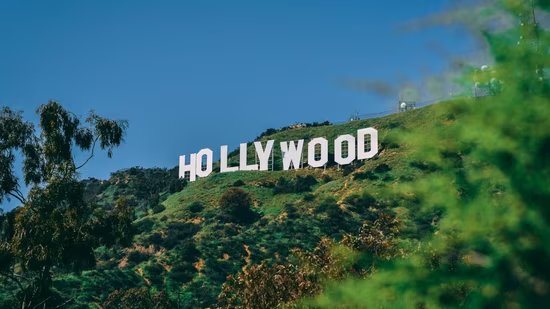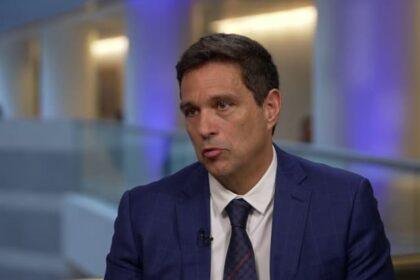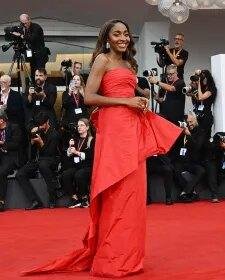Exploring Complexities in “After the Hunt“: A Deep Dive into Ethics, Academia, and Human Relationships
VENICE, Italy – The Venice Film Festival has become a platform for not just cinematic artistry but also for probing discussions about societal issues. This year, the spotlight is on “After the Hunt,” a film that delves into the murky waters of sexual misconduct, power dynamics, and the ethical responsibilities of academia. Starring Andrew Garfield, Julia Roberts, and Ayo Edebiri, the film has ignited spirited debates, particularly around its portrayal of feminist themes.
A Thorny Narrative
Set against the backdrop of Yale University, “After the Hunt” presents a complex narrative that intertwines the lives of several characters grappling with moral dilemmas. Garfield plays Hank, a philosophy professor accused of sexual misconduct by Maggie, a student portrayed by Edebiri. Roberts takes on the role of Alma, a tenured professor who finds herself caught in the crossfire of the ensuing drama. The film’s screenplay, penned by Nora Garrett, emerged from her previous career as a data analyst at Meta, showcasing how diverse backgrounds can contribute to storytelling in cinema.
Garfield, during a press conference at the festival, emphasized the importance of gesticulation in conveying the film’s themes. “I don’t think it’s the actor’s responsibility at all to express anything in public. Ever,” he stated, underscoring the notion that actors should not be burdened with the weight of societal expectations regarding their roles.
The Feminist Debate
The film has not been without controversy. During the press conference, questions arose about whether “After the Hunt” undermines the feminist movement. Director Luca Guadagnino responded sharply, stating, “This question was so tone-deaf to the movie itself. Like, you’ve mistaken the subject with the object.” This exchange highlights the film’s intention to provoke thought rather than provide clear-cut answers, a hallmark of Guadagnino’s directorial style.
The narrative challenges viewers to confront their own biases and assumptions. As the characters navigate their personal and professional lives, the film raises questions about agency, truth, and the consequences of lies. The complexity of these themes is further enriched by the film’s setting, which evokes classic cinematic works that have tackled similar issues, such as Mike Nichols’ “The Graduate” and Joseph L. Mankiewicz’s “All About Eve.”
Character Dynamics and Performances
Roberts’ portrayal of Alma is particularly noteworthy. The character is a blend of strength and vulnerability, embodying the struggles of women in academia. “I was really interested in this idea of a woman who had a lie or something that she was deeply ashamed of at the core of her being,” Garrett explained. This internal conflict becomes a focal point as Alma’s carefully constructed life begins to unravel following Maggie’s accusation.
Garfield’s performance as Hank is equally compelling. He described the challenge of transitioning from a light-hearted role to one filled with emotional depth. “I was really struggling to transition,” he admitted, reflecting on the pressure of delivering a powerful performance under Guadagnino’s fast-paced shooting style. The director’s approach encourages actors to remain on their toes, creating an atmosphere of urgency that enhances the film’s emotional stakes.
The Role of the Ensemble
Edebiri’s character, Maggie, adds another layer of complexity to the narrative. Described as a “tricky girl,” Maggie’s motivations are not easily decipherable, reflecting the film’s broader themes of displacement and identity. Edebiri noted that Maggie’s psychological struggles resonate with her own experiences as a transracial adoptee, adding authenticity to her portrayal.
The ensemble cast’s chemistry is palpable, with Roberts expressing admiration for her co-stars. “I did catch myself watching him [Stuhlbarg] a couple of times instead of being in the scene,” she remarked, highlighting the collaborative nature of the filmmaking process. This dynamic is crucial in a film that thrives on the interplay of relationships and the moral ambiguities that arise within them.
A Throwback to Classic Cinema
“After the Hunt” is not just a contemporary exploration of ethical dilemmas; it also serves as a homage to classic films that have tackled similar themes. The use of a typeface associated with Woody Allen in the opening credits is a deliberate choice, inviting comparisons to the moral complexities found in his works. Guadagnino expressed his admiration for films that have stood the test of time, stating, “I thought a lot about films that have been able to resist the pressure of time and to become some insightful classics.”
This connection to cinematic history enriches the viewing experience, prompting audiences to reflect on how societal norms and ethical considerations have evolved over the decades. The film’s dialogue-heavy scenes echo the intellectual conversations of classic cinema, while also addressing contemporary issues that resonate with today’s audiences.
The Conversation Continues
Ultimately, “After the Hunt” is a film that prioritizes questions over answers. Garfield articulated this sentiment well, stating, “The conversation is the thing, I think, that’s the most we can ever dream of.” The film serves as a mirror, reflecting the complexities of human relationships and the moral quandaries that accompany them.
As viewers engage with the film, they are encouraged to confront their own beliefs and biases, fostering a dialogue that extends beyond the screen. The film’s refusal to provide tidy resolutions invites audiences to grapple with the uncomfortable realities of life, making it a significant contribution to contemporary cinema.
Conclusion
“After the Hunt” stands as a thought-provoking exploration of ethics, power, and the intricacies of human relationships. With its stellar cast and rich narrative, the film challenges viewers to engage in meaningful conversations about the issues it raises. As it continues to spark debate, it reaffirms the role of cinema as a powerful medium for reflection and discourse in an ever-evolving societal landscape.











